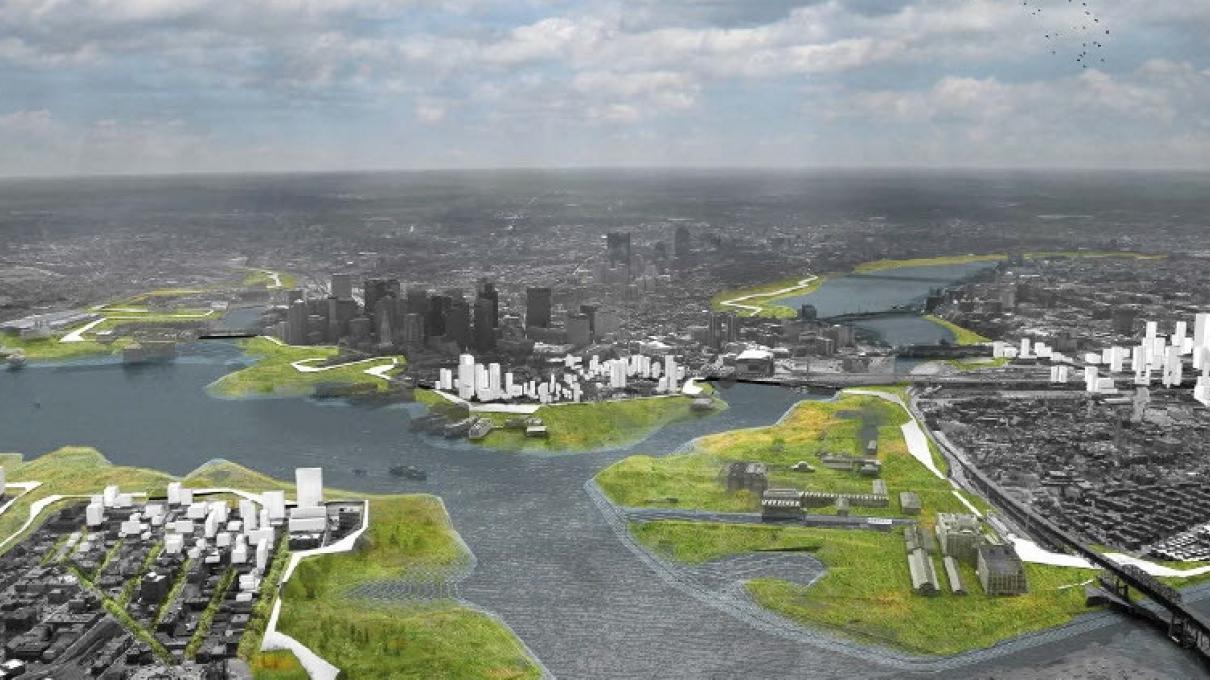Theorizing the Resilience District

In the latest JOLA, professors Alan Berger and Richard Zeckhauser, and researchers Jonah Susskind and Mike Wilson introduce resilience districts, a design-based, decision-making unit to analyze, plan, and implement resilience strategies. This article presents the research exhibited in Resilience Districts Boston at MIT's Gallery 9 in spring 2019.
Abstract: Today, coastal cities face mounting pressures to plan for increased exposure to chronic flooding, and ultimately significant sea level rise. The required investments in urban adaptation are inherently expensive, uncertain and long-term. These factors pose significant challenges for both effective choice and collective action.
This paper argues that metropolitan ‘resilience districts’ offer the appropriate decision-making unit (DMU) to analyze, plan and implement resilience strategies. The working concept of ‘resilience districts’ for urban areas vulnerable to coastal flooding was first coined by a design team at the Massachusetts Institute of Technology spurred by a case study on the New Jersey Meadowlands from the ‘Rebuild By Design’ (RBD) competition. Cities have since begun using this term for their own resilience policies, failing to recognize the original intentions of its meaning.
This analysis details a resilience districting strategy for the Greater Boston Metropolitan Area. The research culminates with a generalizable urban planning and design framework for protecting critical infrastructure, ‘thickening’ regional soft systems and transferring density to less vulnerable areas. The overall theme emphasizes landscape as a critical public safety service.


